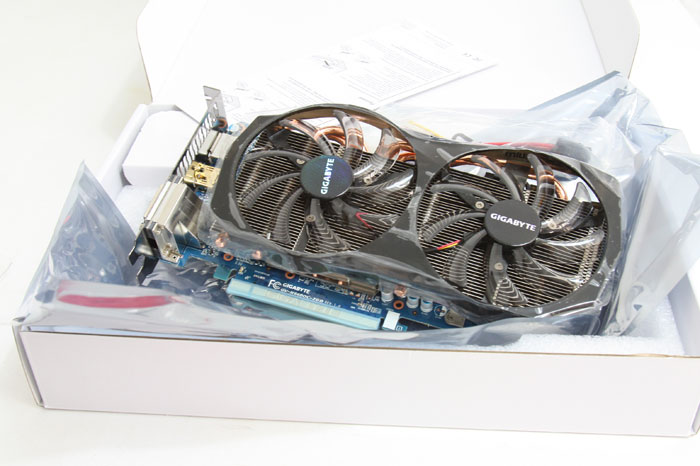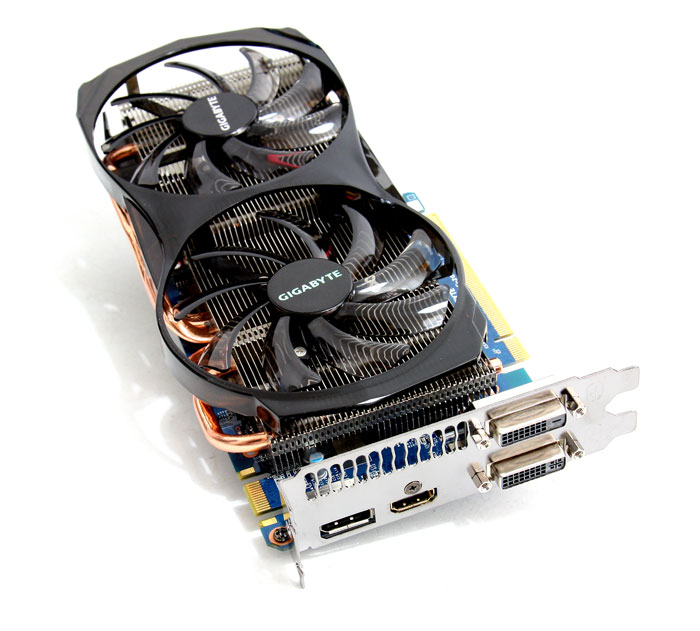That changes with the 'regular' GeForce GTX 660 that is released as we speak. The GeForce GTX 660 is based on a new chip, the GK106. The card will be one of the more anticipated dedicated graphics card series for a long time as the price performance ration of the GeForce GTX 660 should be pretty interesting. This product is going to sit in the 229 EUR/USD segment of the market, and can address pretty much any modern game at everybody's favorite monitor resolution 1920x1080/1200 with extremely acceptable framerates and image quality settings.
Being based on the Kepler GPU architecture obviously NVIDIA had to put some breaks on it in order for the 660 series of product not to compete too much with their bigger brothers. Being more cost effective to produce the GK106 silicon was designed, it really is a new chip, opposed to the GK104 being used on the 660 Ti model.
NVIDIA shaved down the the number of shader processors a little towards 960 (active) if you compare a little with high-end. To understand the positioning a little better simply keep keep in mind that the GeForce GTX 680 has 1536 of them. So that's roughly 38% less shader processors. More had to be done though, the GeForce GTX 670 and 680 all use a 256-bit memory bus, and the GTX 660 series has a 192-bit memory bus tied towards 2 GB of memory. But with the memory running at 6008 MHz in combo with the memory bandwidth gDDR5 memory these days offers, really the difference will be noticeable but certainly not by excessive standards. The last change can be found in the raster operation engine, now cut down to 24 units opposed to 32 that the 670 and 680 use. More on that latest in the technology overview of this article though.
The ever so popular clock frequencies then, the reference (baseline) products will be clocked at 980 MHz and are to boost towards 1033 MHz. Realistically though the boost feature is an average, and you'll notice that these cards will boost to roughly 1100 MHz. With a TDP of 140 Watts the GeForce GTX 660 isn't going to consume heaps of power either, in fact with your average gaming experience the card typically uses roughly 115 Watt as we have measured. Not bad, no Sir.
The GeForce GTX 660 graphics cards will be launched in the 229 USD range. For that amount of money it becomes an accessible product series for many games, and with so many PC games being released this year that will make this series a might fine offering.
Product Showcase
So this is already our fourth or fifth GTX 66 review. Gigabyte for this model they took the GK106 GPU and plastered it onto their own design blue colored PCB. When you look at that PCB you'll notice the a very clean design and build quality, the always great ultra durable component selection that Gigabyte market's as UD2 technology. Sure it's 80% marketing, but it doesn't take away the fact that the components are all of better quality.
For the GTX 660 Gigabyte is using an updated WindForce cooler. It's a fairly simple design, but the card is small yet still gets two fans. The cooler works really well as symbiosis with GK106. The noise levels are very hard to measure and the cooling performance great. We'll show you that in our tests of course.
The card comes factory overclocked albeit not incredible amounts. It runs at a core clock frequency of 1033 MHz and has a boost frequency of 1098MHz. The effective memory data rate (192-bit) is 6008 MHz which follows the reference standard. The card has been equipped with 2 GB of GDDR5 memory.
But lets walk through the product guided by photo's.

Alright, here we have the Gigabyte GeForce GTX 660 OC edition, the 2GB SKU (stock keeping unit) and its packaging. Overall a nice looking card some dark and blue tones. Let's look at the card from several different viewpoints.

A bit of a bummer is that Gigabyte is still using a blue PCB color. That just doesn't look cool on a black motherboard PCB, which 96% of the motherboards out there have.
The card is equipped with the GK106 GPU that harbors the Kepler GPU architecture. You get the basics like the graphics card, PEG converter cables, manual and a demo and driver CD, though bundles will vary with AIB/AIC partners.
Gigabyte clocks this card at a 1033 MHz baseclock, with a 1098 MHz Boost/Turbo clock and the memory is running at 6008 MHz. This factory tweak positions the card close to the performance level of a GeForce GTX 660 Ti. Mind you that the reference baseclock is 980 MHz, so that's a decent factory clock frequency, albeit not a massive overclock.

The card will come with two GB of graphics memory, which is definitely enough if you are a hardcore gamer with a monitor resolution of 1920x1200 and plenty for a product in this price range. Gigabyte gives the card two DVI connectors (dual-link), one HDMI and a DisplayPort connector (all full size).

The card is PCIe gen 3.0 compatible. Going from PCIe Gen 2 to Gen 3 doubles the bandwidth available to the add-on cards installed, from 500 MB/s per lane to 1 GB/s per lane. ASUS definitely is using their own customized PCB alright.
